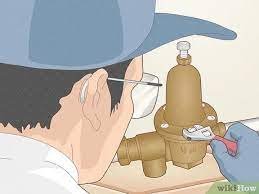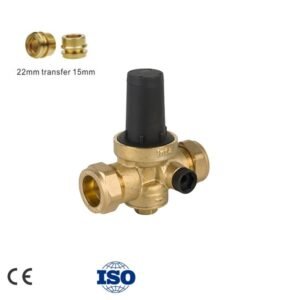Water pressure issues can be a significant inconvenience, affecting daily activities from showering to washing dishes. Whether you’re a homeowner experiencing fluctuating water pressure or a professional looking to resolve your clients’ concerns, understanding the causes and solutions is essential. This comprehensive guide explores common causes of water pressure problems and offers practical solutions to address them.
Understanding Water Pressure
Water pressure is the force that moves water through your pipes to various outlets in your home. It is measured in pounds per square inch (psi). For residential homes, standard water pressure ranges from 40 to 60 psi. Pressure below this range results in weak water flow, while excessively high pressure can damage plumbing fixtures and appliances.
Common Causes of Low Water Pressure
- Clogged Pipes
- Sediment Buildup: Minerals and sediments can accumulate in pipes over time, restricting water flow.
- Corrosion: Older pipes, especially galvanized steel, can corrode and reduce water flow.
- Faulty Pressure Regulator
- A malfunctioning pressure regulator can cause inconsistent water pressure. This device, installed at the water main, maintains a consistent pressure level.
- Leaking Pipes
- Leaks in your plumbing system can significantly reduce water pressure. Look for signs of water damage or damp spots.
- Partially Closed Valves
- Ensure that the main water valve and any other shut-off valves are fully open. Partially closed valves can restrict water flow.
- Municipal Water Supply Issues
- Sometimes, the issue lies with the municipal water supply. Contact your local water department to check for ongoing issues or maintenance work.
- Water Meter Valve
- This valve, usually located near the water meter, needs to be fully open. It is controlled by the water utility company and can affect pressure if not fully open.
Common Causes of High Water Pressure
- Faulty Pressure Regulator
- Just as it can cause low pressure, a defective pressure regulator can also result in excessively high water pressure.
- Thermal Expansion
- When water heats up, it expands. Without a thermal expansion tank, this expansion can increase water pressure in your home.
- Municipal Supply Pressure
- Sometimes, the water pressure from the municipal supply can be too high, necessitating a pressure regulator.
Diagnosing Water Pressure Problems
- Pressure Gauge Test
- Attach a pressure gauge to an outdoor spigot and turn on the water. A reading below 40 psi indicates low pressure, while a reading above 60 psi indicates high pressure.
- Inspecting Valves
- Check all valves in your plumbing system to ensure they are fully open.
- Leak Detection
- Inspect your home for signs of leaks, such as damp spots, mold, or unusually high water bills.
- Professional Inspection
- If you’re unable to diagnose the issue, consider hiring a professional plumber for a thorough inspection.
Solutions for Low Water Pressure
- Clean or Replace Pipes
- Descaling: Use descaling solutions to clean pipes with mineral buildup.
- Pipe Replacement: Replace severely corroded pipes with modern materials like PEX or copper.
- Adjust or Replace Pressure Regulator
- Adjust the pressure regulator to the recommended settings or replace it if it is faulty.
- Fix Leaks
- Locate and repair any leaks in your plumbing system. This may involve patching small leaks or replacing sections of piping.
- Open Valves
- Ensure all valves, including the main water valve, are fully open.
- Install a Pressure Booster
- For homes with consistently low water pressure, consider installing a pressure booster pump to increase water pressure.
Solutions for High Water Pressure
- Adjust or Replace Pressure Regulator
- Adjust the pressure regulator to reduce pressure. If it’s faulty, replacing it may be necessary.
- Install a Thermal Expansion Tank
- To address thermal expansion, install a thermal expansion tank. This helps absorb the extra pressure created when water heats up.
- Install a Pressure-Reducing Valve
- If the municipal supply pressure is too high, install a pressure-reducing valve to maintain a safe pressure level.
Maintenance Tips to Prevent Water Pressure Issues
- Regular Inspections
- Conduct regular inspections of your plumbing system to catch potential issues early.
- Clean Faucets and Showerheads
- Regularly clean aerators and showerheads to prevent mineral buildup that can restrict water flow.
- Monitor Water Pressure
- Periodically check your water pressure using a pressure gauge to ensure it remains within the ideal range.
- Service Pressure Regulators
- Have your pressure regulators serviced regularly to ensure they are functioning correctly.
Conclusion
Addressing water pressure issues can seem daunting, but with the right knowledge and tools, it is manageable. Understanding the causes and implementing the appropriate solutions will help restore normal water flow in your home. For persistent problems or complex plumbing systems, don’t hesitate to consult a professional plumber. Regular maintenance and proactive measures can prevent many common water pressure issues, ensuring a steady and reliable water supply for your home or business.






